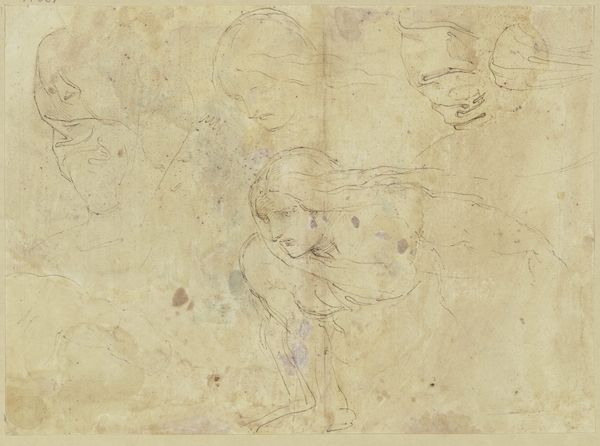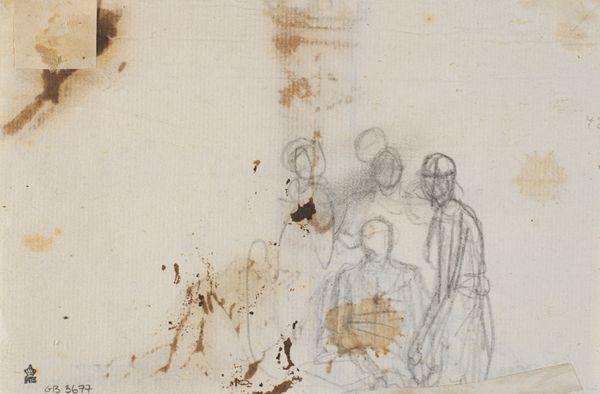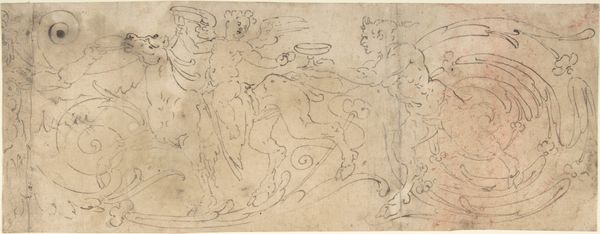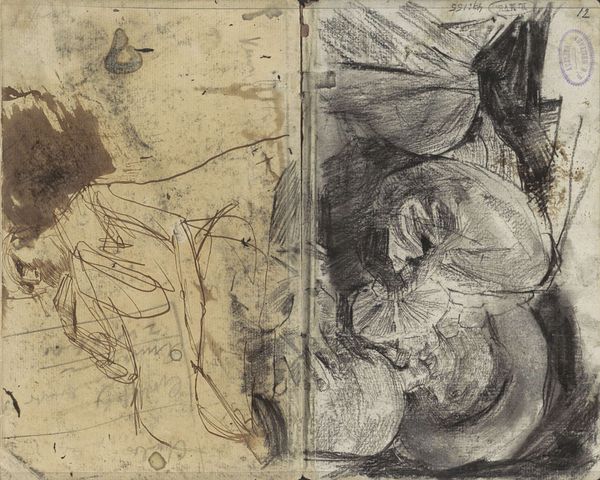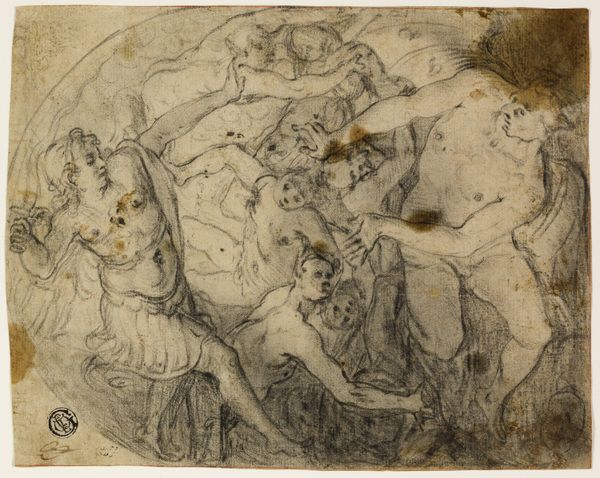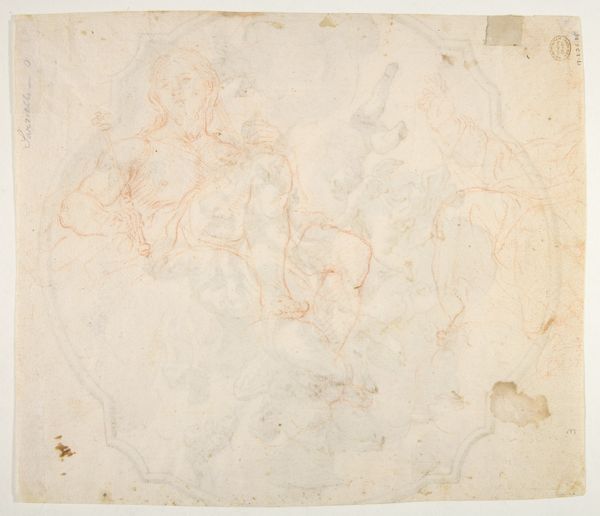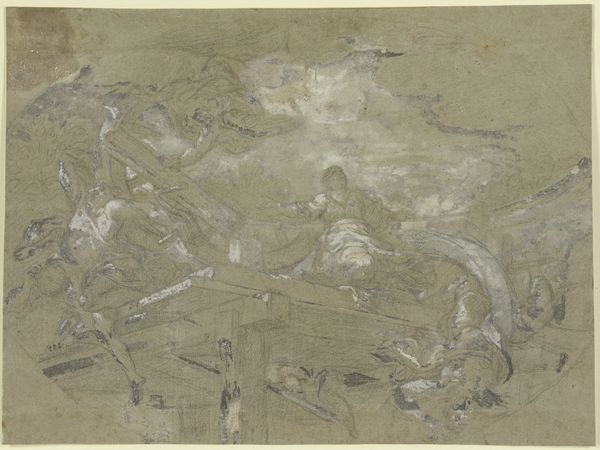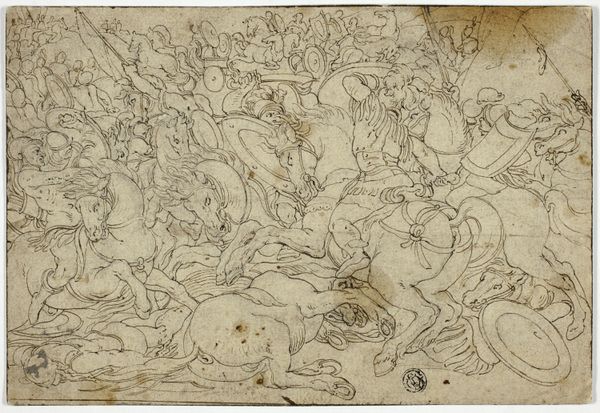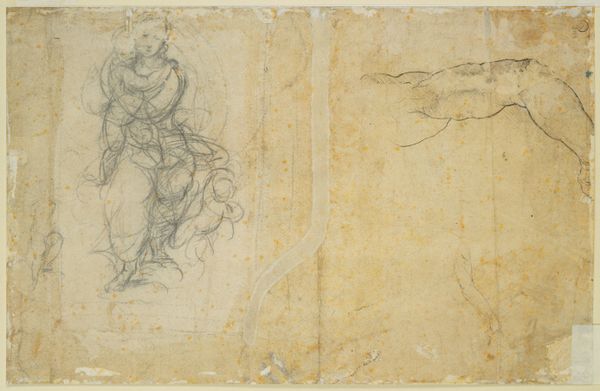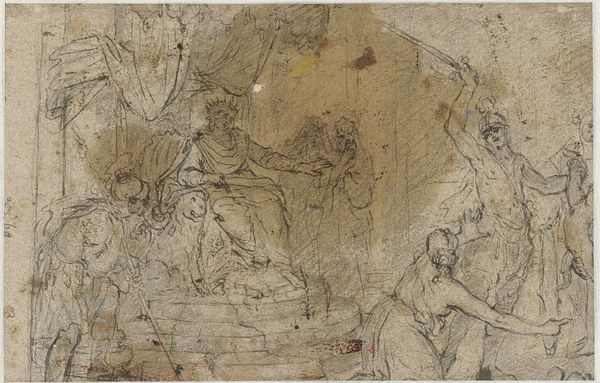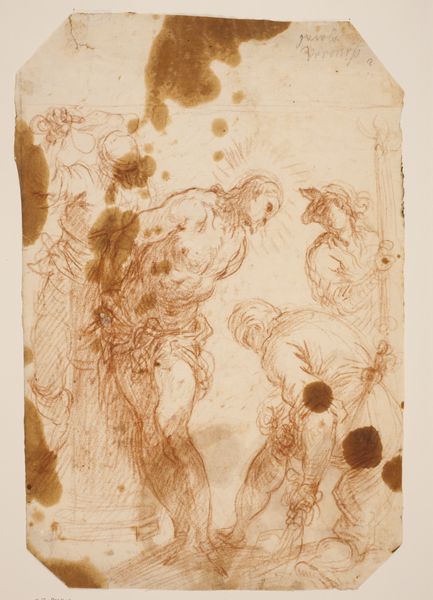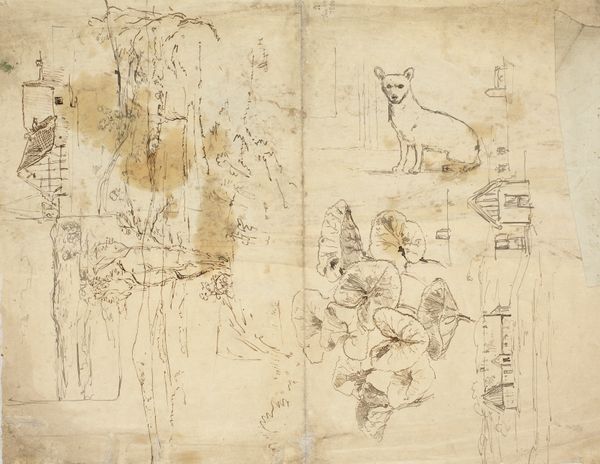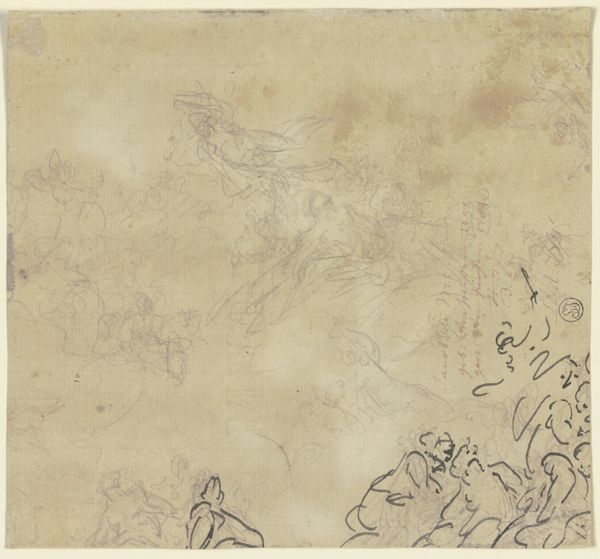
Sketches of Men's Faces, Horses' Muzzles, and Mounted Soldiers 1813 - 1814
0:00
0:00
drawing, paper, ink, graphite
#
portrait
#
drawing
#
figuration
#
paper
#
ink
#
romanticism
#
line
#
graphite
Dimensions: 174 × 230 mm
Copyright: Public Domain
Curator: Welcome. Before us is Théodore Géricault's "Sketches of Men's Faces, Horses' Muzzles, and Mounted Soldiers," created between 1813 and 1814. It’s currently held at the Art Institute of Chicago. Editor: It feels like a fever dream. All these overlapping figures sketched so rapidly. I wonder about the hand that produced these marks—so quick, almost frantic. What paper and ink were available to him then? Curator: Well, during this period, Géricault was deeply engaged with military themes, aligning with the grand Romantic narratives that stirred the public imagination, particularly after the Napoleonic era. Editor: The means of visualizing power. I mean, just look at those equestrian figures! Are these graphite and ink? There’s an immediacy, as if these sketches were born directly from observation. Not the polished result, but the tangible moment of their creation, visible. Curator: Exactly. And Géricault wasn't just interested in glorifying war. He was investigating human and animal forms under the duress of conflict. How the turmoil shaped not just bodies, but spirits too. Editor: You know, when I consider his artistic practice, I'm thinking not only of the paper, but the availability of models or uniforms. The cost of the raw materials alone signals privilege, and a society deeply affected by what it consumes. Curator: A very sharp point. And while Romanticism glorified the individual, it did so by embedding the individual in history, particularly concerning social mobility at the time and the effect on the public. The mounted soldier wasn't simply a figure; he was a symbol of broader societal shifts and structures. Editor: The visual language of class then becomes really striking. The details he includes in some portraits but neglects in others suggests so much. It asks us to investigate how class is performed, not merely observed. Curator: Ultimately, I think Géricault captures something essential about an era of dramatic social and political change reflected and driven by art. It’s a raw study of men and horses enmeshed in forces bigger than themselves. Editor: Absolutely. The sketch's roughness is deceptive; it's deliberate and it really shows how even the quickest strokes of line on paper hold echoes of the social reality.
Comments
No comments
Be the first to comment and join the conversation on the ultimate creative platform.

